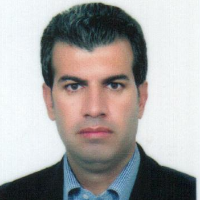An essay on typology of kings in Persian folk tales: the case study of Samak-e Ayyar, Darab –Nameh and Hussein –korde –Shabestari
Author(s):
Abstract:
This essay seeks to explain the typology of kings and to report on their practices to represent their role in the advancement of tales. The method used in this research is library-based and qualitative in terms of content analysis. The criterion for choosing these stories is, besides its reputation, a wide range of readers, the general interest and the frequencies of the presence of kings. After reviewing these stories, the author found that kings often seemed to be in Iranian and non-Iranian affairs according to the narrator's type of attitude, and that the picture of kings was reported according to the general context of the story and its context. In addition to requiring a particular content, it also requires certain heroes and types of character. Darab-Nameh has an epic & mythological content, and therefore the behaviors and actions of the most kings are mythological epics. Hussein- Kord is also an epic-religious tale. Our hypothesis is that storytellers seek to shape and regulate the structure of society in the form of king, the courtiers and other heroes; in other words, they seek to establish a definitive framework that is occasionally violated. They are problematic and are considered as unforgivable. In order to study the stories and according to the frequency of types, the author concluded that the "courtiers", especially the king, his family and his ministers, had the highest frequency and presence, and most of the stories began with the words "Shah" or "Prince". There is an intense sense of indigence and Iranism in these stories, so that the types of Iranian kings are much more subtle, more human, richer, more just and wiser than other non-Iranian officials. Darab Nameh is more epic than the other two stories, and the type of kings has been portrayed in a more fictitious, confident and historical way. It should be noted that in Hussein- kord, the kings are not very present and do not act much more.
Keywords:
Language:
Persian
Published:
Culture and Folk Literature, Volume:7 Issue: 25, 2019
Pages:
157 to 180
https://magiran.com/p1969053
مقالات دیگری از این نویسنده (گان)
-
Fundamental Confrontations of Fictional Characters in Jahangir Nameh
Elham Ebrahimi, Amirabbas Azizifar *
Research in Narrative Literature, -
Analysis of the Story Collection "Majid’s Tales" by Houshang Moradi Kermani Basedon the P4C Educational Program
Yaser Safari Sechghaei *, Abdolreza Naderifar, Amirabbas Azizifar
,


